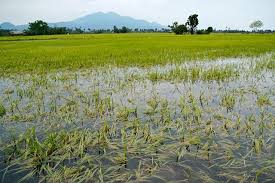Punjab: Paddy, basmati arrivals decline due to prolonged rainfall
A decline in paddy and basmati arrivals — estimated at over 25%—has sent shockwaves across Punjab’s largest grain market, Bhagatanwala.
The shortfall, agricultural stakeholders say, is the result of persistent, week-long spells of rain that battered the region during the harvest season.
“The production of paddy and basmati, including 1509 and 1121 varieties, is down by more than 25%. This damage is due to continuous rainfall—sometimes seven to eight days at a stretch—not the flash floods that hit other parts of Punjab,” said Amandeep Singh Chinna, vice-president, Federation of Arhtiya Association.
Chinna said the market is witnessing a massive dip in arrivals. “Last year, by this time, we received over 1.25 crore bags of paddy and basmati. This year, the figure is down to 78–80 lakh bags. The first loss is borne by the farmer; labourers get less work, and commission agents’ sales have dropped by nearly 25%. The entire chain collapses.”
He warned that the shortage could push rice prices upward, though the greatest financial blow is already falling on those at the bottom of the agricultural ladder. “When the farm produce is good, prosperity reaches everyone—from cloth merchants to jewellers. When it is not, the whole economy suffers,” he added.
Around 4–5% of the crop is still lying with farmers in homes and godowns, waiting to be brought to market. But many say the losses are already irreversible. Atari-based farmer Baljinder Singh said the damage is far greater in areas hit by flash floods. “Those who suffered flood losses are being compensated. We too suffered losses due to climate-related reasons—continuous rain. The govt must compensate us as well.”
He added that while consumers fear a price rise, not all of it may immediately translate into higher retail prices. “Stockists keep rice stored for two to three years. But hoarders can always distort the market.”
Gurpinder Singh, a marginal farmer from Mammankae, illustrated the crisis in numbers. “Last year, my per-acre income from paddy was around Rs 75,000. This year it is Rs 50,000. On my 10 acres, I’ve lost Rs 2.5 lakh. Last year I harvested 35 quintals per acre; this year it is 25. In basmati too, the yield dropped from 22–23 quintals to 15–16.” “The losses are entirely due to the weather. We deserve compensation,” he said.
This article has been republished from The Times of India.

